We have long held the notion that architecture is not just about meeting programmatic requirements set by a client. For a project to be deemed successful, we must think about the effects of a space on the end user.
However, design cannot be singular in its approach. While it is important for spaces to be human-centric, we must pay equal attention to the impact of building activities on the environment.
These are the values that inform Nature-Integrated Design or NID, a holistic approach to Design that connects humans with nature. NID focuses on the health & wellbeing of end-users, while also minimising the impact of buildings & developments on the environment. NID promises habitability as well as sustainability of spaces. That is, it tends to the needs of the humans occupying a space, while also addressing the overall impact of the built space on its site, setting and context.

Defining Sustainability
While sustainability has become a buzz word in recent years, its history dates back to merely half a century. The World Commission on Environment and Development defined the term in 1987 as ‘development that meets the needs of the present without compromising the ability of future generations to meet their own needs’.
While the Commission sought to address environmental, economic as well as social sustainability, recent years have seen the focus shift towards environmental sustainability the most. This is understandable, considering the climate crisis we face. Achieving environmental sustainability is the biggest challenge that humanity presently faces, with far reaching repercussions on even economic and social sustainability.
Even as we become more aware of the need for environmental sustainability, stakeholders the world over haven’t been quick enough on the uptake. Despite being one of the most polluting sectors, the building industry often resorts to greenwashing over actual sustainable interventions. This has diluted the faith that clients as well as end users place in AEC professionals, not to mention the obvious – and immense – environmental degradation caused by such practices.
In our opinion, these shifts make it critical for architects to choose sustainable interventions over all else.
The Parameters of Sustainability in Nature-Integrated Design
While sustainability may mean different things to different people, for us it boils down to three key concerns which affect not only how a building is designed, but also how it operates. The framework for NID that we deploy defines these concerns as:

Resilience: Resilience is a strategy that enhances the ability of a building to both prevent damage and to recover from damage. These damages are not just circumstantial (such as disasters or accidents), or life-cycle based (such as wear and tear through normal usage). The pandemic has taught us that global shifts in lifestyles can occur in a matter of weeks, if not days – and our built environments must be adaptable to accommodate them.

So, we define resilience under NID as the ability of a building to adapt to:
- ever-evolving advancements in building technology and science.
- changing usage patterns and preferences
Buildings and built environments that cannot make room for their users’ needs tend to fall obsolete even before they lose their structural strength. This is not only draining on our natural resources, but also demands higher and more frequent investments from clients.
Resource Efficiency: Reduced use of raw materials and non-renewable resources, the production of high-quality goods with little waste, and the preservation of product value over the long term are all examples of resource efficiency. Under the ambit of NID, we aim at resource efficiency in two major ways:
- Material Efficiency, wherein we take care to use materials that cause the least damage to their environment in their procurement, application and usage.
- Energy Efficiency, wherein we work to reduce a building’s consumption of (and reliance on) external sources of energy.
Some ways in which we achieve this is by paying attention to elements. We protect and conserve water in our projects through on-site harvesting and recycling methods. We devise strategies to optimise daylight for minimising the need for artificial lighting without increasing user reliance on air conditioning. We opt for materials that are durable and low-maintenance, to increase a building’s lifespan as well as decrease a project’s life cycle cost of repairs and upkeep.
We complement these choices with the inclusion of on-site energy sources such as solar panels. In this way, we are able to minimise environmental damage caused by conventional energy sources, which typically rely on fossil fuels.
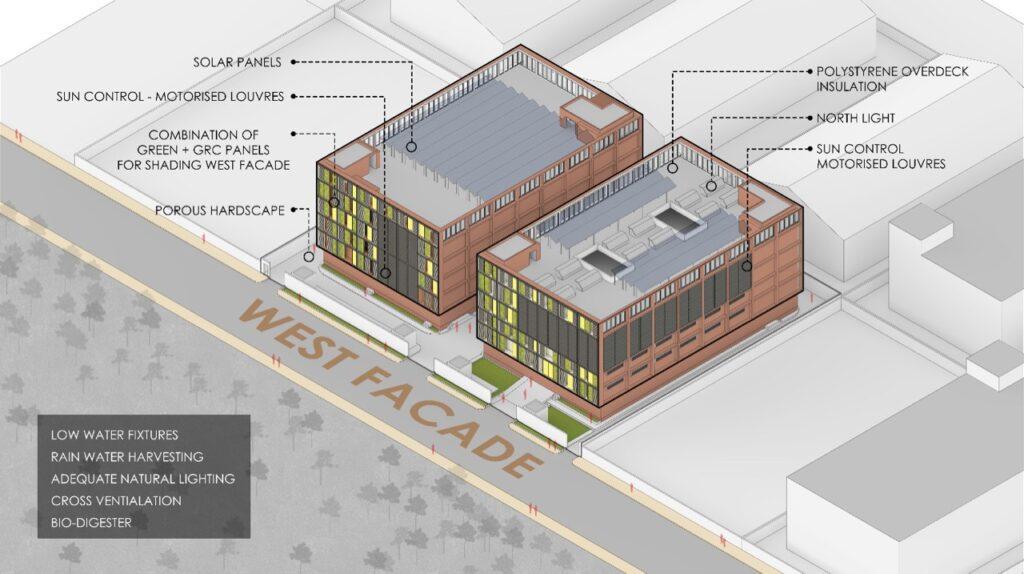
Designing With Nature: We design with due deference to the site context and conditions. This enables us to connect users with their surroundings, and also to design with nature – building with the lay of the land and the existing tree cover instead of assuming ownership of the site as a blank canvas.
This approach allows us to not only create stronger linkages between the project and its place, but also reach green building benchmarks in an authentic manner. Nature-Integrated Design aims at reducing the carbon footprint of a project, and we believe the best way to do so is by respecting and preserving what already exists.
At BASICS, we approach each project as an opportunity to apply this framework to optimise outcomes. This also lets us test and refine our framework so that we can continue raising the bar for ourselves.
Rapid technological advancements and rising awareness among clients has made it possible for us to continually evolve these parameters to achieve the best results for each stakeholder of the project – including and especially the earth upon which it stands.

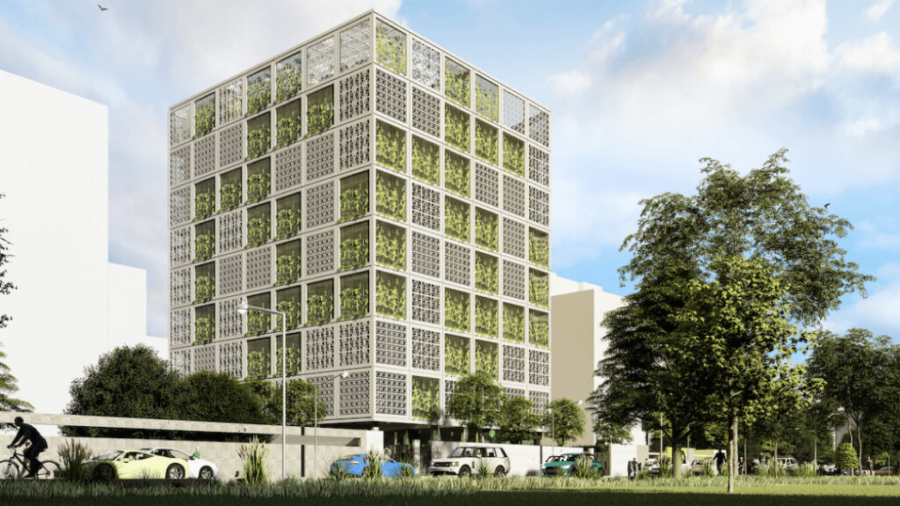
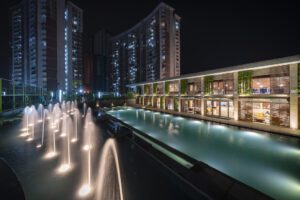
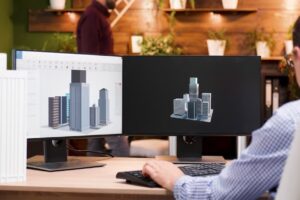
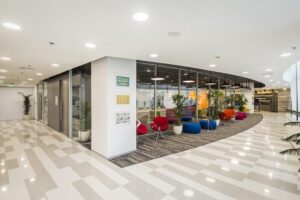
Leave a Reply
Your email is safe with us.